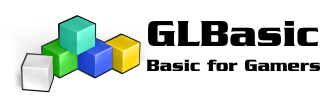Hello again,
I have opened a new branch to my rpg engine, so it can serve as jump and run engine.
Added a Box Editor / placement editor. Added simple box shadows and player shadow.
Added proper box collision routines.
finished the enemy editor / placement editor. Implemented proper hit detection routines.
added Terrain ghosting when it blocks the view to the player.
Added acceleration and mommentum to the players movement.
Added X Z rotation to the player when he stands on a slope.
Added speed gain / loss when walking on a slope.
Added controlable camera rotation.
Rewritten the event execution engine.
Added Effects ( mostly 3d plains with animated texture ).
Removed the lawn effect for now ( drops the frame rate to much on the Pandora ).
Made the whole engine compatible with maps of any size.
Working on:
Allowing boxes to move, so they can serve as platforms.
Latest videos (older to newest ):
I have opened a new branch to my rpg engine, so it can serve as jump and run engine.
Added a Box Editor / placement editor. Added simple box shadows and player shadow.
Added proper box collision routines.
finished the enemy editor / placement editor. Implemented proper hit detection routines.
added Terrain ghosting when it blocks the view to the player.
Added acceleration and mommentum to the players movement.
Added X Z rotation to the player when he stands on a slope.
Added speed gain / loss when walking on a slope.
Added controlable camera rotation.
Rewritten the event execution engine.
Added Effects ( mostly 3d plains with animated texture ).
Removed the lawn effect for now ( drops the frame rate to much on the Pandora ).
Made the whole engine compatible with maps of any size.
Working on:
Allowing boxes to move, so they can serve as platforms.
Latest videos (older to newest ):


